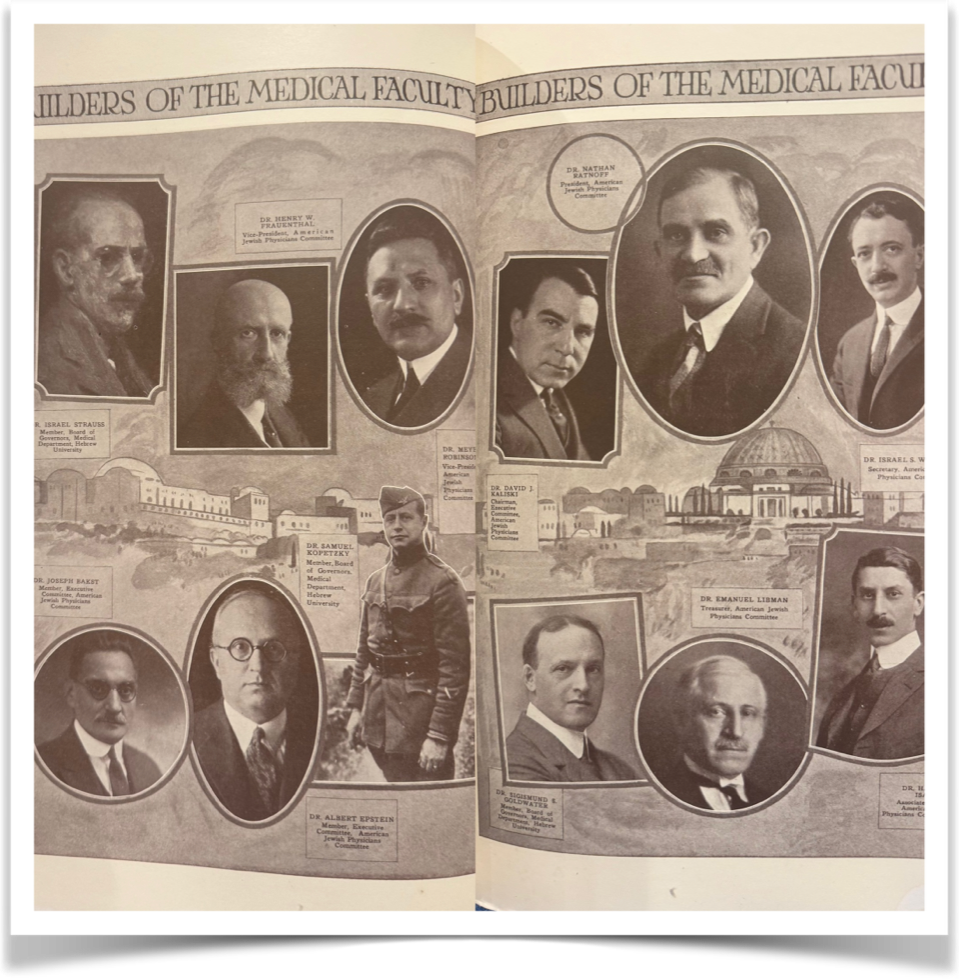Lifestyle
Hebrew University Celebrates 100 Years of Innovation and Impact

This year marks the 100th anniversary of the establishment of Hebrew University in Jerusalem, a milestone celebrated with reflections on its historic achievements and ongoing contributions to education and research. The university officially opened on April 1, 1925, during a ceremony attended by notable figures including Chaim Weizmann, Lord Arthur Balfour, and Rabbi Abraham Isaac Kook.
The vision for Hebrew University included a comprehensive medical school, inspired by Albert Einstein, who in 1921 initiated discussions among physicians in New York to lay the groundwork for this ambitious project. By 1922, a committee of doctors, pharmacists, and dentists had successfully raised $250,000 (equivalent to approximately $4.8 million today) to fund the establishment of a medical school.
In 1923, a delegation traveled to Palestine to identify a suitable site for the medical school and hospital on Mount Scopus. The decision was made to commence the project with a research institute focused on microbiology and public health, addressing critical health challenges in the region. By the time of its opening in 1925, the committee had acquired a 10-acre site, established a chemical laboratory, created a medical library housing over 10,000 books, and initiated plans for a university hospital.
The launch of the university was celebrated in publications such as The New Palestine, which dedicated several pages to the visionaries behind the medical departments. Just two years later, the department of bacteriology and hygiene was established, and for the next 15 years, the university collaborated with Hadassah in the United States to expand these departments into a full-fledged school of medicine. This school provided essential training for practicing physicians and conducted significant medical research.
By 1946, plans were underway to create Israel’s first medical school at Mount Scopus. The university faced significant challenges during the 1948 War of Independence, when 78 staff members from the university and hospital were killed in an ambush on a medical convoy. This tragedy led to the evacuation of facilities on Mount Scopus, which remained inaccessible until the reunification of Jerusalem during the 1967 Six-Day War.
In 1949, the medical school was officially established and commenced operations in downtown Jerusalem before relocating to the university’s Ein Kerem campus in 1960. The founding vision of a Jewish university complete with a medical school has endured, with the institution continuing to innovate and expand its offerings. Recently, the Faculty of Medicine inaugurated the Institute of the Study of Hope, Dignity and Wellbeing. This new academic institute aims to foster interdisciplinary research into the biology, psychology, and sociology of hope, with applications in fields such as medicine, nursing, and social work.
Israel’s unique cultural landscape makes it an ideal setting for such a study of hope. The national anthem, Hatikvah, which translates to “The Hope,” encapsulates the enduring spirit of the nation. As the country continues to strive for peace, the university’s legacy remains a testament to the visionaries who believed in a brighter future and the transformative power of education and research.
-

 Education3 months ago
Education3 months agoBrandon University’s Failed $5 Million Project Sparks Oversight Review
-

 Science4 months ago
Science4 months agoMicrosoft Confirms U.S. Law Overrules Canadian Data Sovereignty
-

 Lifestyle3 months ago
Lifestyle3 months agoWinnipeg Celebrates Culinary Creativity During Le Burger Week 2025
-

 Health4 months ago
Health4 months agoMontreal’s Groupe Marcelle Leads Canadian Cosmetic Industry Growth
-

 Science4 months ago
Science4 months agoTech Innovator Amandipp Singh Transforms Hiring for Disabled
-

 Technology4 months ago
Technology4 months agoDragon Ball: Sparking! Zero Launching on Switch and Switch 2 This November
-

 Education4 months ago
Education4 months agoRed River College Launches New Programs to Address Industry Needs
-

 Business3 months ago
Business3 months agoRocket Lab Reports Strong Q2 2025 Revenue Growth and Future Plans
-

 Technology4 months ago
Technology4 months agoGoogle Pixel 10 Pro Fold Specs Unveiled Ahead of Launch
-

 Technology2 months ago
Technology2 months agoDiscord Faces Serious Security Breach Affecting Millions
-

 Education4 months ago
Education4 months agoAlberta Teachers’ Strike: Potential Impacts on Students and Families
-

 Education4 months ago
Education4 months agoNew SĆIȺNEW̱ SṮEȽIṮḴEȽ Elementary Opens in Langford for 2025/2026 Year
-

 Science4 months ago
Science4 months agoChina’s Wukong Spacesuit Sets New Standard for AI in Space
-

 Business4 months ago
Business4 months agoBNA Brewing to Open New Bowling Alley in Downtown Penticton
-

 Business4 months ago
Business4 months agoNew Estimates Reveal ChatGPT-5 Energy Use Could Soar
-

 Technology4 months ago
Technology4 months agoWorld of Warcraft Players Buzz Over 19-Quest Bee Challenge
-

 Business4 months ago
Business4 months agoDawson City Residents Rally Around Buy Canadian Movement
-

 Technology2 months ago
Technology2 months agoHuawei MatePad 12X Redefines Tablet Experience for Professionals
-

 Technology4 months ago
Technology4 months agoFuture Entertainment Launches DDoD with Gameplay Trailer Showcase
-

 Top Stories3 months ago
Top Stories3 months agoBlue Jays Shift José Berríos to Bullpen Ahead of Playoffs
-

 Technology4 months ago
Technology4 months agoGlobal Launch of Ragnarok M: Classic Set for September 3, 2025
-

 Technology4 months ago
Technology4 months agoInnovative 140W GaN Travel Adapter Combines Power and Convenience
-

 Science4 months ago
Science4 months agoXi Labs Innovates with New AI Operating System Set for 2025 Launch
-

 Technology4 months ago
Technology4 months agoNew IDR01 Smart Ring Offers Advanced Sports Tracking for $169










